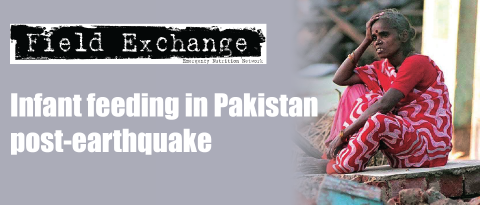Maternal micronutrient status and decreased infant growth
Summary of published research1
Lusaka in Zambia is the location for a recent study on maternal micronutrient status and decreased growth of infants born during and after the maize price increase resulting from the southern African drought of 2001-2002.
Between June 2001 and July 2003, a longitudinal cohort was recruited from women at 32-34 weeks gestation. Follow-up continued to 16 weeks postpartum, ending the beginning of January 2004. Inclusion criteria for the study were residence within the Chilenje clinic catchment area, known HIV status and written informed consent. HIV status could be either positive or negative.
Blood samples and data were analysed according to whether they were collected before (June to December 2001), during (January 2002- April 2003) or after (May 2003 to January 2004) the period of increased maize prices. The season and maternal HIV status were controlled for in the analyses.
The main findings of the study were that maize prices increases were associated with decreased maternal plasma vitamin A during pregnancy and reduced plasma vitamin E postpartum. The lowest values were among samples collected after May 2003 compared with before January 2002. There were no significant effects of sampling date on maternal weight, haemoglobin or acute-phase proteins and only marginal effects on infant weight. Such sub-clinical micronutrient deficiencies are sometimes known as 'hidden hunger' and are not usually considered during food shortage emergencies, unless macronutrients deficiencies are present.
Infant length at 6 and 16 weeks of age decreased progressively throughout the study (P-values for time of data collection were 0.51 at birth, 0.051 at 6 weeks and 0.026 at 16 weeks). The difference supports the hypothesis that stunting is partly due to prenatal insults. Infants born after maize prices had decreased again were the shortest; maize prices would have been high for at least part of the gestation of all these infants. The differences in length z-scores of 1.06 at 6 weeks and 0.77 at 16 weeks between the first and last birth cohorts translate into length differences of 18 mm and 5 mm respectively and are large enough to be of public health importance.
The results show modest effects of the maize price increases on maternal micronutrient status. The most serious consequence of the price increases is likely to be increased stunting among infants whose mother's experiences high maize prices while pregnant. During periods of food shortages, it might be advisable to provide micronutrient supplements even to those who are less food insecure.
1Gitau R et al (2005). Maternal micronutrient status and decreased growth of Zambian infants born during and after the maize price increases resulting from the southern African drought of 2001-2002. Public Health Nutrition 8 (7), pp 837-843
Imported from FEX website


